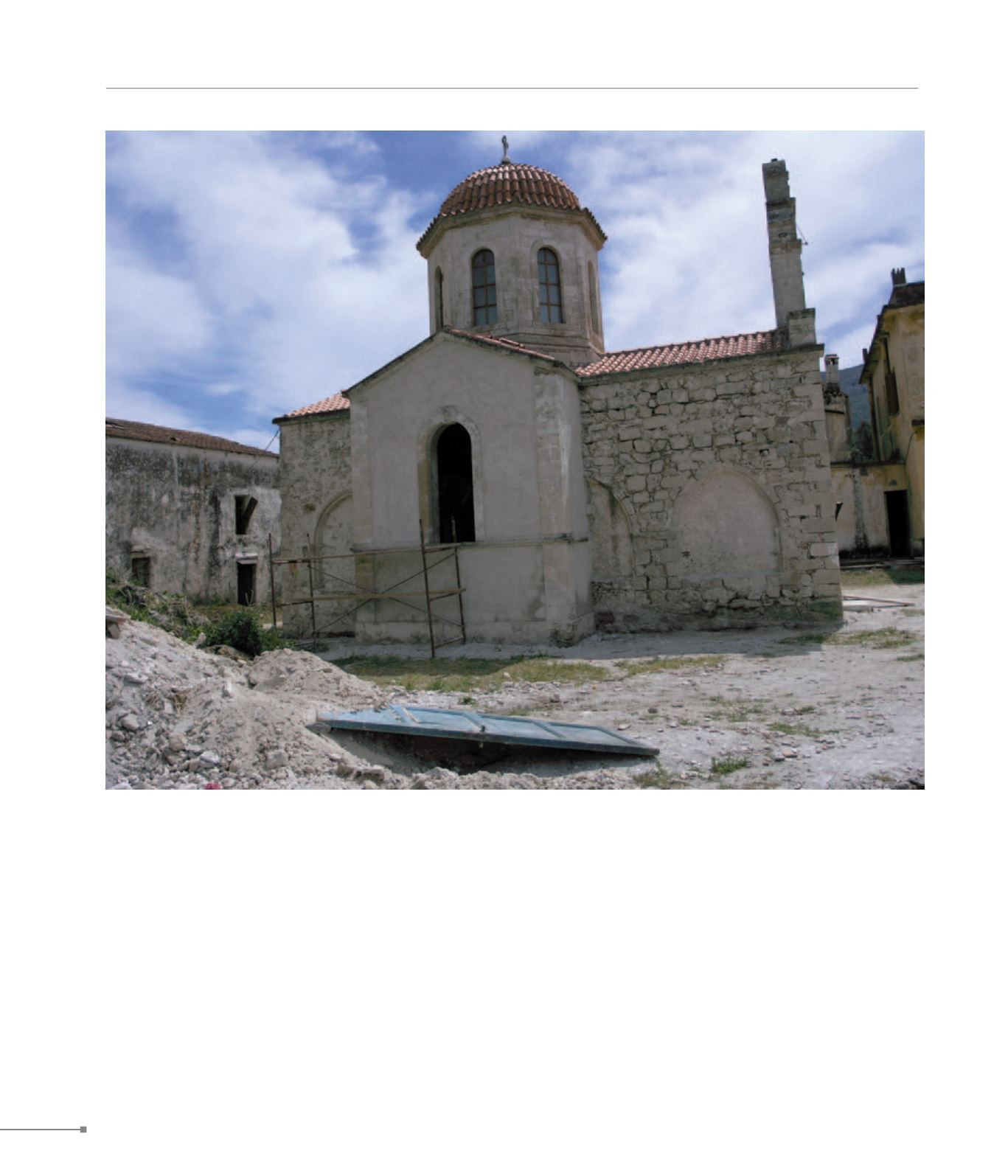
Neus Amari.
Neus Amari.
CRETE
262
408. Neus amari, Asomatoi monastery, catholicon (Νεφς Αμάρι, μονή Ασωμάτων, καθολικό)
In its present-day form the Asomatoi monastery, located in the
centre of Amari province, dates from Late Venetian rule and
the 19th c. In the first decades of the 20th c. the catholicon
was converted into a domed, free cross plan type. Recent re-
search has indicated that the church was originally built in the
first half of the 13th c. and was single-nave and timber-roofed,
with architectural elements placing it in a group of “Frankish-
Byzantine” churches featuring refined masonry, a three-sided
apse, and pointed blind arcades on the side walls. A short
distance S of the monastery is the large church of Zoodochos
Pege (also called Panagia Kera). It was originally a cross-in-
square church with dome (late 12th c.), and later a domed,
aisleless chapel was added at the NW corner. In the end of
the 14th c. the S aisle and the nave collapsed and the church
was rebuilt as a three-aisled basilica. In the S section a luxuri-
ous Late Gothic doorframe was constructed with the Kallergis
family coat of arms on the lintel. The church contains a few
remnants of frescoes of the mid-13th c. A short distance to
the W stands the domed, cruciform church of Aghia Paraskevi
reconstructed at a later period on the foundations of an earlier
church. In the N crossarm is an arcosolium with a scene of
the Pantokrator and the dedicator Georgios Chortatzis with
his family. At the Spilios site is the barrel-vaulted, single-nave
church of Saint John Theologos, with wall-paintings of 1347.


